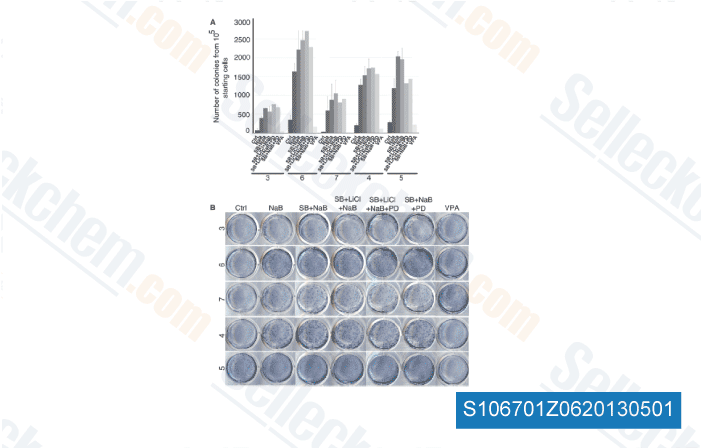3 genes, bHLH, AG1 and ZF, were identified as staying overexpressed in ripe fruit in RNA seq information examination and thus had been designated for fur ther confirmation. Similarly, 5 genes, ERF3 Q6RH27 and MYB/At3g06490, were identified as staying overexpressed in AZ in RNA seq information analysis and had been assigned to further confirmation. The qRT PCR examination confirmed the enrichment bHLH, AG1 and ZF genes in ripe fruit plus the enrich ment of ERF3, MYBPA1, MYB108, NAC and MYB/ At3g06490 genes from the olive AZ. Notably, the ex pression of ERF3, MYBPA1, MYB108, NAC and MYB/ At3g06490 had been not detected in fruit, plus the expression of bHLH, AG1 and ZF had been not detected in AZ. As a result, the qRT PCR expression re sults correlated with all the RNA seq expression data to the genes examined.
On top of that, we applied qRT PCR examination to the expression profiles of eight TFs in olive fruit and AZ during fruit ripening and abscission. The expression of bHLH and ZF enhanced 3 fold and 1 fold in olive fruit, respectively, all through rip ening, when AG1 expression decreased STF118804 one. six fold through ripening, implying that these genes are in volved in ripening occasions. On the other hand, transcripts of MYBPA1, MYB108, NAC and MYB/At3g06490 accumu lated all through abscission in olive AZ, whereas the expres sion of ERF3 was decreased in olive AZ all through abscission. Therefore, the expression pattern of some genes in olive fruit or AZ, carried out by qRT PCR, are shown to represent the transcriptome associated with fruit ripening or even the transcriptome associated with the activation of abscission.
Conclusion We carried out 454 transcriptome sequencing JNJ26481585 and de novo assembly for two tissues, ripe fruit and AZ, of Olea europaea. As being a consequence, we describe transcriptomic vary ences involving the ripe fruit and this AZ taking place at final stage of ripening in olive likewise as probable new genes generated. Changes in gene transcripts were accompanied by modifications in expression of TFs, particularly these from the TFs MADS box, ZF, homeobox domain proteins, bHLH, and bZIP households, that putatively might trigger the cross talk concerning fruit and AZ. Our benefits indicate that genes encoding members of Aux/IAA, C2H2L, and CAMTA families had been preferentially transcribed in ripe fruit. By contrast, TF genes of the HSF, GRAS, GAGA binding protein, EIN3/EIL, E2F/DP, CCAAT binding protein, and WRKY families had been preferentially transcribed in AZ.
Additionally, by quantitative actual time PCR analysis, we confirmed the mRNA Seq success for eight TF genes. This result implies the study of people TFs connected together with the expression pattern observed in ripe fruit could  open main biological pathways governing gene expression regu lation in ripe fruit. These information provide the 1st com prehensive and comparative molecular knowledge for understanding the expression distinctions in these tissues.
open main biological pathways governing gene expression regu lation in ripe fruit. These information provide the 1st com prehensive and comparative molecular knowledge for understanding the expression distinctions in these tissues.
FAK signal
FAK is activated by focal adhesion complex
